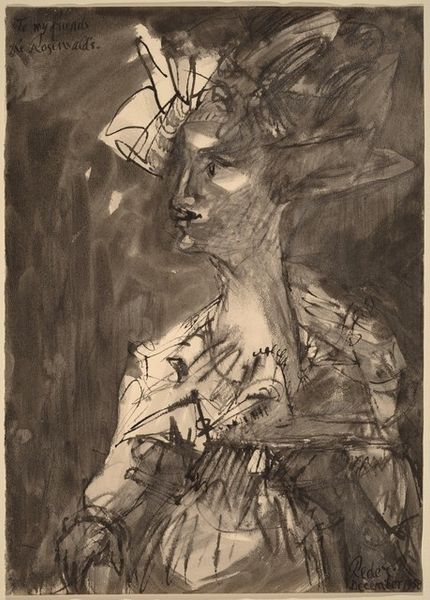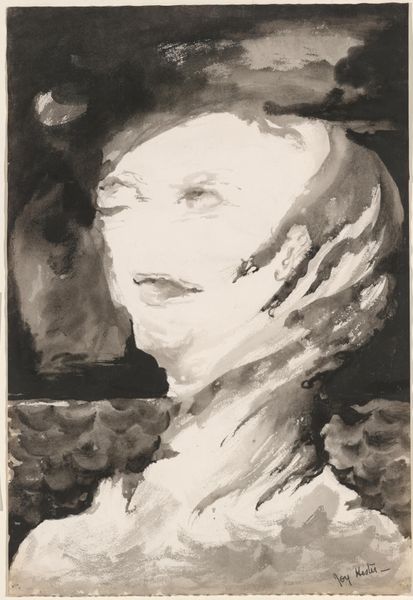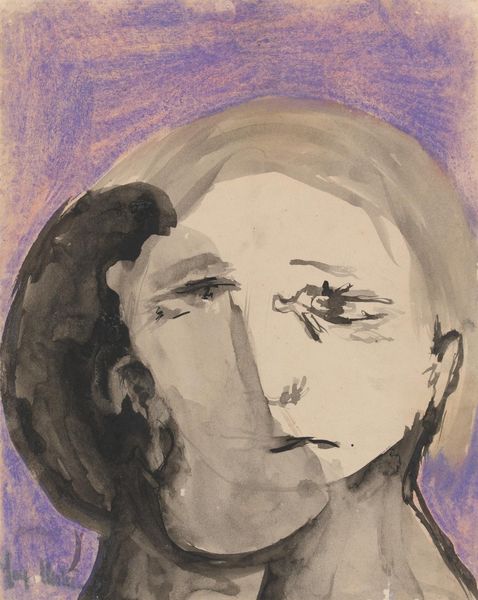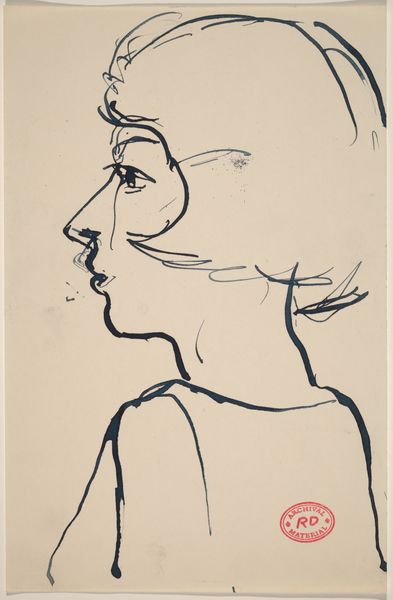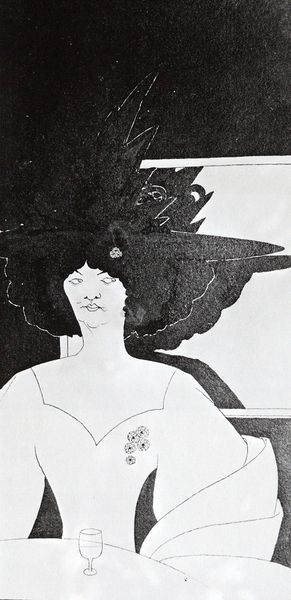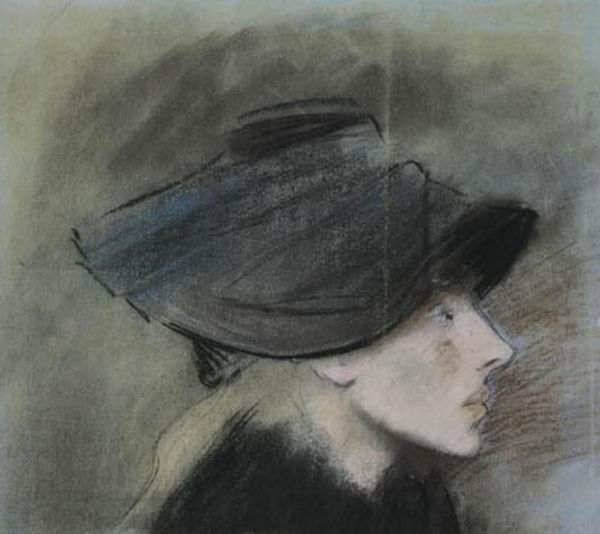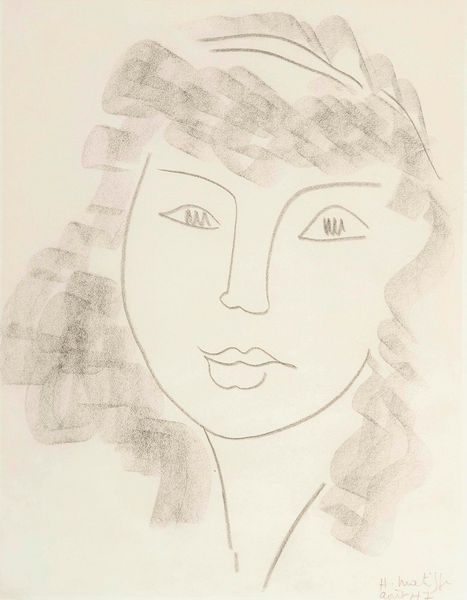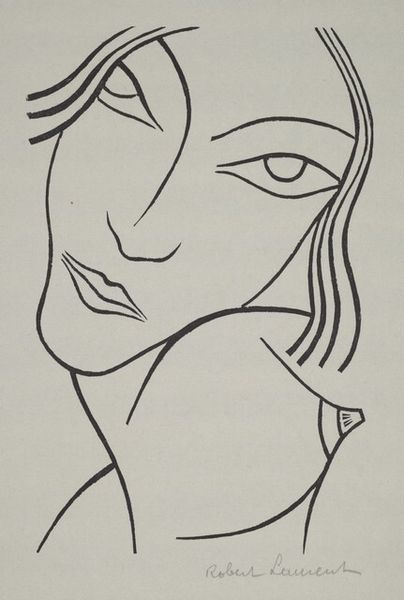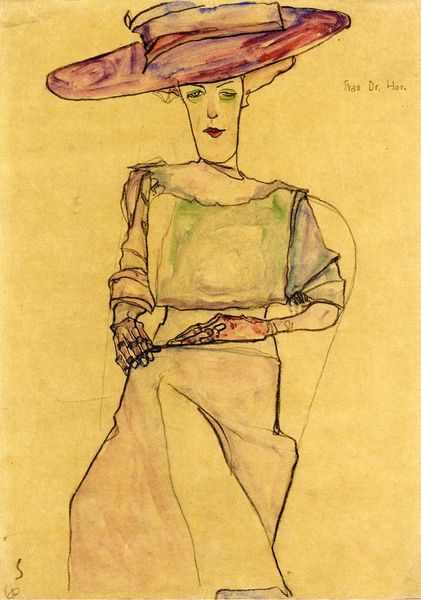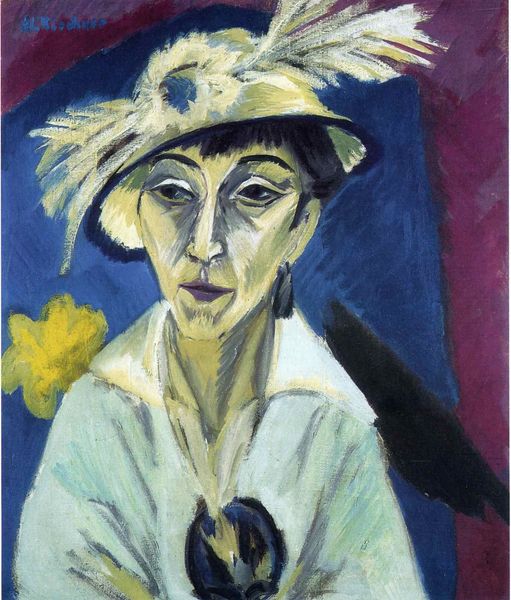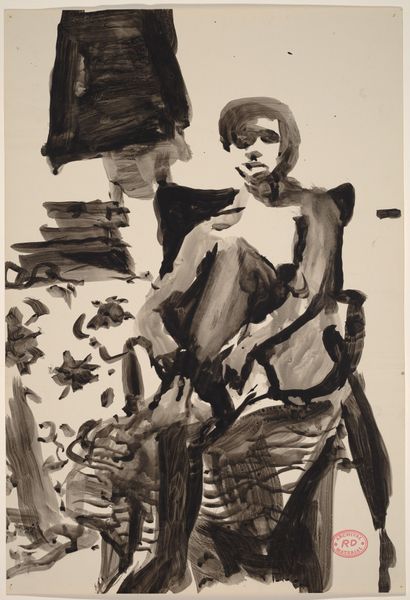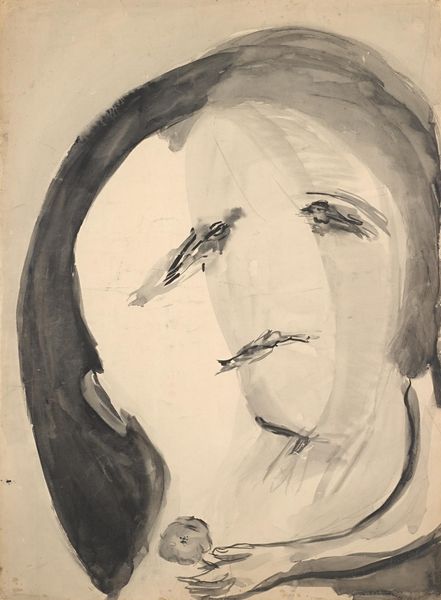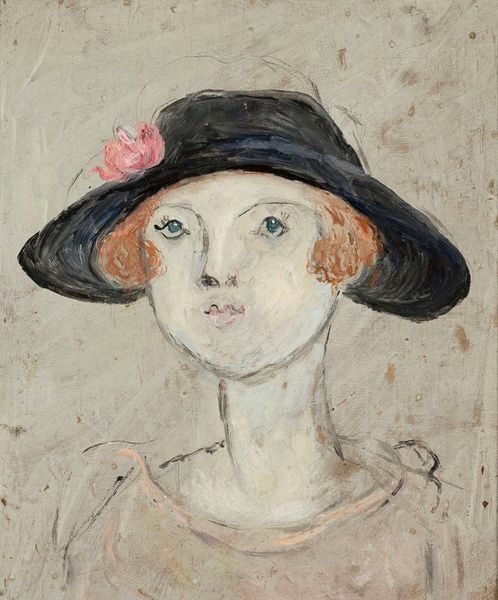
tempera, painting
#
portrait
#
tempera
#
painting
#
caricature
#
caricature
#
surrealism
#
surrealism
Dimensions: 75.4 x 40.4 cm
Copyright: Joy Hester,Fair Use
Curator: Looking at this, I immediately feel uneasy. There's something unsettling about the starkness and the distortion of the face. Editor: And that's precisely what makes Joy Hester's work so compelling! This painting, titled simply "Sin título," or "Untitled," dates back to 1955. She rendered it using tempera paint. Curator: Hester was very keen to capture the likeness in all the shapes in the woman's figure, like a cartoon. The caricature-esque feel combined with the somber monochrome palette, does add to the painting's tension. Is this a recurring motif for her? Editor: Hester returned frequently to a raw and visceral portraiture, often infused with surrealism. This piece shows her unique style. The exaggerated features – the narrow eyes, the elongated face – they amplify the emotional intensity. You also get the sense of anxiety or alienation. It could have roots in the political and cultural contexts that often relegated women in Australia to prescribed domestic roles, against which female artists would challenge through subversive artwork. Curator: The hat, though – such a commonplace adornment transformed into something almost alien through its simplicity and placement. Its stark whiteness contrasts so heavily with the deep background, highlighting this otherworldliness of the sitter. It calls into question social convention, while speaking in equal measure of fragility, defiance, all captured in a way that resists easy consumption or comprehension. Editor: Exactly. She taps into this primal sense. Hats can be symbols of protection, hiding something and here this simple brim hat with an elegant detail makes this caricature even more enigmatic. Hester provides her personal take on what happens to the symbolism when societal and political contexts change with a new cultural revolution. Curator: I appreciate now how much the distortion actually serves a purpose. Not just to be strange, but to speak about this cultural tension between expectation and revolt in that historical period, which speaks just as profoundly now as it did then. Editor: Indeed. By confronting these themes, the work becomes less a portrait of one woman, and more of a snapshot of social pressures through her lived experiences. A true mark of Hester’s legacy, in my mind.
Comments
No comments
Be the first to comment and join the conversation on the ultimate creative platform.
